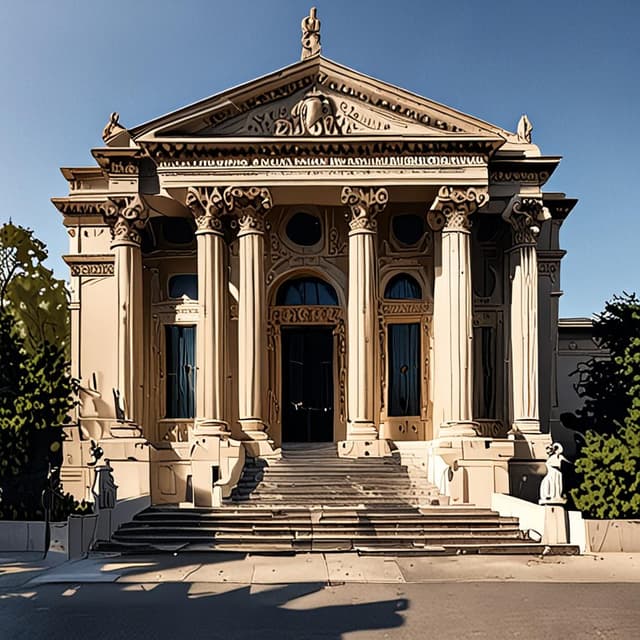
| Name | Komitas Conservatory |
| Type | Music school |
| Focus | Traditional Armenian classical and folk music • Preservation of Armenian musical heritage |
| Founded | 1789 |
| History | One of the oldest music schools in the world, with over 200 years of history nurturing the cultural renaissance of the Armenian nation. |
| Location | |
| Notable faculty and alumni | Influential Armenian composers, performers, and scholars |
The Komitas Conservatory is Armenia's preeminent institution for the study, performance, and preservation of Armenian classical and folk music. Founded in 1789, it is one of the oldest continuously operating music schools in the world. Based in the capital city of Yerevan, the Conservatory has played a pivotal role in the cultural and national renaissance of Armenia over its 200+ year history.
The Komitas Conservatory was established in 1789 by a decree of the Armenian Catholicos of Echmiadzin. Originally named the Gevorkian Seminary, it was founded with the goal of training clergy and preserving the sacred musical traditions of the Armenian Apostolic Church.
In the late 18th century, the school began expanding its curriculum beyond religious music, incorporating more secular Armenian folk songs, dances, and instrumental pieces. This shift was driven by the school's first director, the renowned musicologist and composer Gomidas Vartabed, known as "Komitas".
Komitas, who studied at the conservatory, advocated for elevating Armenia's rich musical heritage and making it accessible to the public. Under his leadership in the 1810s-1830s, the school was renamed the Gevorkian Conservatory and became a hub for the preservation and study of traditional Armenian music.
Unlike many European music conservatories that emphasized Western classical repertoire, the Gevorkian/Komitas Conservatory maintained a steadfast focus on Armenian national music. Its curriculum centered around teaching:
This emphasis on Armenian music, as opposed to the predominant Italian and German classical styles, helped the Conservatory cultivate a distinct national musical identity. It also positioned the school as a bulwark against cultural assimilation during periods of foreign occupation and oppression.
Over the centuries, the Komitas Conservatory has produced many of Armenia's most renowned composers, performers, and musicologists. Some of the most influential alumni and faculty include:
These and other Komitas alumni have played pivotal roles in the global dissemination and appreciation of Armenian music.
Beyond its musical accomplishments, the Komitas Conservatory has been a bastion of Armenian national identity and cultural resistance. During periods of foreign occupation and oppression, the school served as a refuge and incubator for Armenian intellectuals, artists, and activists.
In the 19th century, the Conservatory was at the heart of the Armenian National Awakening, which sought greater autonomy and recognition for the Armenian people. Faculty and students were instrumental in establishing Armenian-language newspapers, publishing Armenian literature, and advocating for Armenian cultural rights.
This legacy of Armenian nationalism continued into the 20th century, with the Conservatory playing a key role in the ultimately successful movement for Armenian independence from the Russian Empire and later the Soviet Union. Today, the school remains a vital institution for the preservation and promotion of Armenian cultural heritage.
Now officially known as the Komitas National Conservatory of Armenia, the school continues to be the country's preeminent institution for the study of Armenian classical and folk music. It offers degrees in performance, composition, musicology, and music education, all with a heavy emphasis on traditional Armenian repertoire and styles.
The Conservatory maintains numerous orchestras, choirs, and folk ensembles that tour internationally, sharing Armenian music with global audiences. It also houses an extensive archive of Armenian musical recordings, sheet music, and other artifacts that researchers from around the world utilize.
As Armenia and its diaspora continue their cultural renaissance in the 21st century, the Komitas Conservatory stands as a stalwart guardian of the nation's rich musical heritage. It remains a vibrant hub for the creation, preservation, and transmission of Armenia's unique musical traditions.